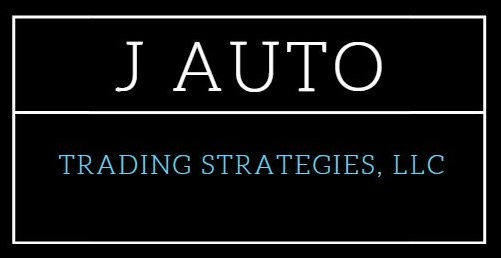Why the Federal Reserve Is Now Obsolete: The Case for Abolition
JULY 3, 2025
Why the Federal Reserve Is Now Obsolete: The Case for Abolition
The Genius Act of 2025 ignited a monetary revolution. By unlocking an estimated $3.5 trillion in Federal Reserve balances as collateral for stablecoins, it unleashed a decentralized liquidity engine that the Federal Reserve can neither control nor rival. This seismic shift exposes a truth long suspected: the Federal Reserve is obsolete—redundant, inefficient, and increasingly destructive. With data, technology, and legislative momentum aligning, the case for its abolition is undeniable.
I. The Fed’s Redundancy Is Provable
Federal Reserve balances are backed by a financial system underpinned by approximately $17 trillion in U.S. Treasuries and mortgage-backed securities, reflecting the broader U.S. national debt. Within this, the Fed holds around $7–9 trillion in assets, with an estimated $3.5 trillion in excess reserves trapped and unusable by the private sector for 17 years. Federal Reserve data suggests that less than $100 billion weekly—under 3% of this collateral base—is needed for intradistrict settlement across the 12 Reserve Districts, even accounting for adjustments from open market operations like quantitative tightening, quantitative easing, and reverse repo programs. So why has this vast capital remained frozen?
The Genius Act changes everything. It allows banks to use these reserve balances as collateral for stablecoins—fully reserved, transparent, and non-rehypothecated. Unlike Treasuries or repo agreements, which banks often pledge elsewhere on their balance sheets, stablecoin collateral under the Act cannot be reused. This eliminates double-counting and shadow leverage, ensuring pure, 1:1-backed liquidity. By unlocking an estimated $3.5 trillion in previously inert reserves, the Act creates a decentralized liquidity engine that bypasses the Fed entirely. Private markets, powered by blockchain transparency, can now settle and allocate capital more efficiently than a centralized bureaucracy, rendering the Fed’s intermediation role obsolete.
II. The Fed’s Role in Systemic Instability
The Federal Reserve’s gravest flaw is its consistent creation of asset bubbles, not their prevention. Its track record is a litany of monetary malpractice:
Dot-Com Bubble (1995–2000): Fed-fueled liquidity drove tech valuations to unsustainable heights, culminating in a $5 trillion market crash.
Housing Bubble (2002–2008): Post-9/11 low rates spurred a housing frenzy, leading to the subprime crisis and the Great Recession.
QE Bubble (2009–2022): Near-zero rates and an $8.9 trillion balance sheet inflated equities, real estate, and bonds, widening inequality and encouraging reckless speculation.
Post-COVID Chaos (2020–2023): $4 trillion in stimulus, followed by rapid rate hikes, triggered regional bank failures (e.g., Silicon Valley Bank, First Republic), exposing the Fed’s policy whiplash.
In each instance, the Fed was either the instigator or the ineffective responder, with no accountability or meaningful reform. Its interventions amplify systemic fragility, not stability.
III. The ECB: A Cautionary Tale
The European Central Bank (ECB) exemplifies central banking’s failures. Since 2010, it has stumbled through crises with little to show:
Negative interest rates failed to spur growth.
Quantitative easing widened the economic divide between Northern and Southern Europe.
TARGET2 imbalances, exceeding €1.8 trillion, burden Germany with Italian and Spanish liabilities.
Eurozone GDP growth limped at 0.4% in 2023, despite trillions in stimulus.
Youth unemployment in Spain hit 27.2% in 2024.
The ECB’s technocratic paralysis, persistent inequality, and erosion of democratic trust signal a grim future for centralized monetary control. If this is the model, it’s one to reject.
IV. Stablecoins: A Superior Alternative
The argument for abolishing the Fed is not a call for chaos but for a transparent, rule-based system. Stablecoins issued under the Genius Act deliver:
No Rehypothecation: Unlike the Fed’s opaque liquidity operations, stablecoins are fully backed 1:1, with reserves verifiable in real time.
Programmable Transparency: Blockchain enables trustless transactions and instant audits, surpassing the Fed’s antiquated systems.
Adaptive Liquidity: Banks can tailor stablecoin issuance to local demand, unlike the Fed’s blunt, one-size-fits-all policies.
Sidelining the Fed sacrifices nothing essential. It eliminates artificially suppressed rates, crony bailouts, and credit-driven boom-bust cycles that enrich leveraged elites while punishing savers.
V. The Abolitionist Case
Reform is insufficient; abolition is necessary. The Federal Reserve’s flaws are structural and irreparable:
It’s Unnecessary: Stablecoins handle settlement and liquidity with greater precision and lower risk.
It’s a Risk Amplifier: The Fed fuels bubbles and bails out its own failures, destabilizing the economy.
It Lacks Legitimacy: Operating independently of Congress, it wields unchecked power over capital allocation.
It Drives Inequality: Asset inflation benefits the wealthy, while savers and workers face eroded purchasing power.
Even the Fed acknowledges its fading relevance. Its 2023 Annual Report questioned the impact of private digital currencies on its operations. The answer is clear: they’ve already surpassed it.
VI. A Proposed Path Forward
Abolition need not be abrupt. A deliberate sunset of the Federal Reserve, with oversight transferred to Congress and the Treasury, is a proposed framework. The Genius Act lays the foundation. Next steps could include:
Full reserve banking to ensure stability.
Treasury-backed digital assets (e.g., USD-G, USD-T) for sovereign trust.
A decentralized framework for settlement and credit allocation.
Conclusion: Markets, Not Mandates
For over a century, the Federal Reserve promised stability but delivered opacity, crises, and cronyism. In 2025, technology and legislation have rendered it obsolete. Stablecoins offer sound money. Collateral ensures trust. Transparency replaces blind faith.
The Federal Reserve is no longer necessary. It’s time to let markets drive the future.
Copyright © 2025 J Auto Trading Strategies, LLC. All rights reserved.
The information and content provided herein are for informational purposes only and do not constitute financial, investment, legal, or other professional advice. The views and opinions expressed are those of the author and do not necessarily reflect the official policy or position of J Auto Trading Strategies, LLC or any other entity. Any reliance you place on such information is strictly at your own risk.
J Auto Trading Strategies, LLC and its affiliates, officers, directors, employees, or agents shall not be liable for any loss or damage, including without limitation, indirect or consequential loss or damage, or any loss or damage whatsoever arising from the use of or reliance on this content. Trading and investment involve significant risks, and past performance is not indicative of future results.
This content is protected by copyright law and may not be reproduced, distributed, or transmitted in any form or by any means, including photocopying, recording, or other electronic or mechanical methods, without the prior written permission of J Auto Trading Strategies, LLC, except as permitted by applicable law.





